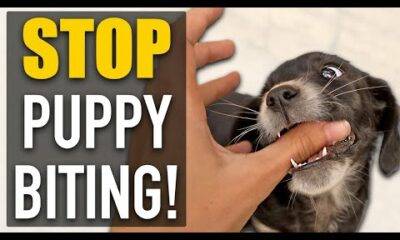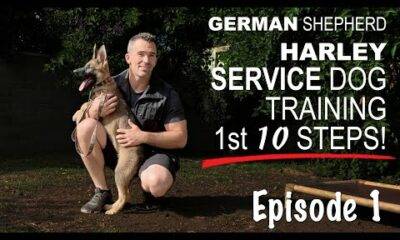Dog Care and Maintenance
Mastering How to Potty Train a Dog in 7 Days – Fast & Surefire Tips
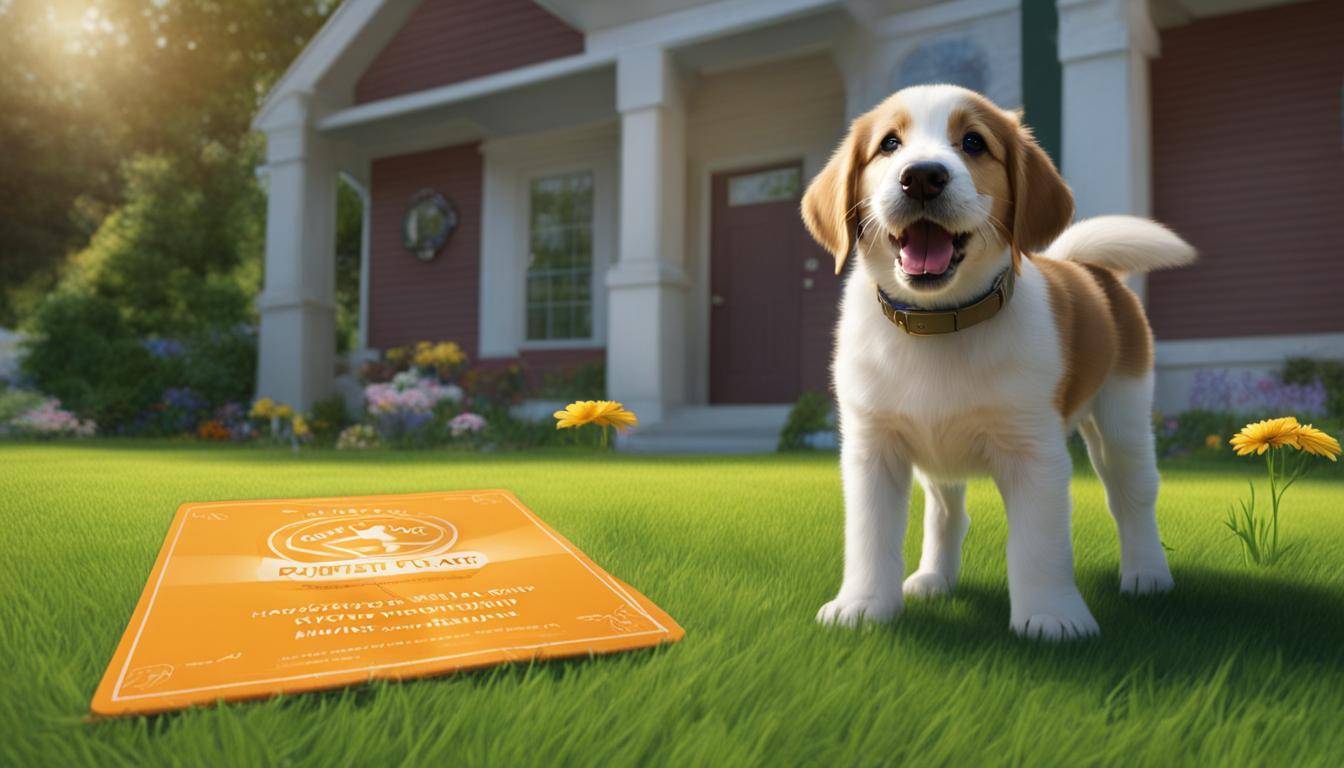
Learning how to potty train a puppy can be a challenge, but it is crucial for building a trusting and loving relationship with your new furry friend. Ignoring potty training can lead to issues down the line, so it’s essential to understand the fundamentals of training. In this article, we will provide you with fast and surefire tips to successfully potty train your dog in just 7 days.
Key Takeaways:
- Consistency and patience are key to successful potty training.
- Establish a routine by taking your puppy outside at specific times.
- Use positive reinforcement and rewards to encourage good behavior.
- Be prepared for accidents and clean them thoroughly to prevent repeat incidents.
- Crate training can be a helpful tool for potty training and providing a safe space for your puppy.
The Fundamentals of Potty Training a Puppy
Potty training a puppy is an essential part of the journey to a well-behaved and happy canine companion. It requires patience, consistency, and an understanding of your puppy’s needs. In this section, we will delve into the fundamentals of puppy potty training and provide you with valuable tips to set you and your furry friend up for success.
One of the key principles of potty training is setting the right routines. Start by selecting a reputable breeder who emphasizes good potty habits from an early age. This foundation will make the training process smoother. Remember that accidents may happen, so be prepared for them. Take your puppy outside to their designated potty area whenever they show signs of needing to go, such as sniffing or circling. Always praise and reward your puppy when they eliminate outside to reinforce the positive behavior.
In addition to consistent potty breaks, it’s important to keep a watchful eye on your puppy when indoors. Limit their freedom by confining them to a puppy-proofed area or using a crate. This will prevent accidents and help them learn to hold their bladder and bowels. Remember to provide plenty of opportunities for exercise and playtime outside of the confined space.
Creating a Puppy Potty Training Schedule
A puppy potty training schedule is a valuable tool in establishing routine and consistency. Take your puppy outside first thing in the morning, after every meal, nap, playtime, and before bedtime. Use the same exit door and designated potty area each time to reinforce the connection. During the initial stages of training, take your puppy out every hour or so to prevent accidents and provide them with an opportunity to eliminate outside.
| Time | Activity |
|---|---|
| 6:30 AM | Take puppy outside for potty break |
| 7:00 AM | Feed puppy breakfast |
| 7:15 AM | Take puppy outside for potty break |
| 8:00 AM | Playtime |
| 8:30 AM | Take puppy outside for potty break |
Remember to adjust the schedule based on your puppy’s age, breed, and individual needs. Consistency is key, so stick to the schedule as closely as possible. With time and patience, your puppy will learn to hold their bladder and bowels, leading to successful potty training.
Setting Your Puppy’s Routine
Establishing a routine is crucial for successful potty training. Consistency and timing play a significant role in helping your puppy understand when and where they should go potty. By following a consistent schedule, you can set your puppy up for success and make the training process more efficient.
Creating a Puppy Potty Training Schedule
A puppy potty training routine should include regular potty breaks throughout the day. Here is a sample schedule to help you get started:
| Time | Potty Break |
|---|---|
| 6:00 AM | Take your puppy outside for a potty break. |
| 7:30 AM | Another potty break after breakfast. |
| 10:00 AM | Potty break following a nap or playtime. |
| 12:00 PM | Potty break before lunch. |
| 3:00 PM | Potty break after another nap or playtime session. |
| 6:00 PM | Potty break before dinner. |
| 8:30 PM | Final potty break before bedtime. |
Remember that every puppy is different, and you may need to adjust the schedule based on your puppy’s individual needs. Be observant and watch for signs that your puppy needs to go, such as circling or sniffing the floor. Always reward your puppy with praise and treats when they go potty outside, reinforcing the positive behavior and encouraging them to continue.
Consistency in Training
Consistency plays a crucial role in dog training, and it is especially important when it comes to potty training. Being a consistent dog owner sets clear expectations for your furry friend and helps them understand the desired behaviors. Consistency means following the same routine, using the same commands, and providing the same positive reinforcement every time.
When it comes to potty training, consistency means taking your dog to the same area every time they need to go. This helps them associate that spot with the act of relieving themselves. Avoid distractions during potty breaks and give your dog ample time to do their business. Be patient and avoid rushing them. Remember, potty training takes time, and accidents may happen along the way.
In addition to consistency during potty training, it’s important to establish regular eating habits for your dog. Control their food and water intake and anticipate when they will need to go outside. This will help you avoid accidents and reinforce the potty training routine. Being consistent in all aspects of training will lead to better results and a stronger bond with your dog.
“Consistency is key when it comes to dog training. By being consistent in your commands, routines, and expectations, you provide clear guidance to your dog and promote positive behaviors.”
Training Tips for Dog Owners
Here are some additional training tips for dog owners to enhance consistency:
- Create a daily schedule and stick to it. Dogs thrive on routine, so having set times for meals, walks, and potty breaks will help them understand what is expected of them.
- Use positive reinforcement, such as treats, praise, and petting, to reward your dog for good behavior. This will motivate them to repeat the desired actions.
- Be patient and understanding. Dogs learn at their own pace, and it’s important to remain patient throughout the training process. Avoid punishment or negative reinforcement, as this can damage the trust between you and your dog.
- Consistency extends beyond training sessions. Ensure that all family members or caretakers are on the same page and follow the same training rules to avoid confusion and reinforce consistent behaviors.
By being consistent in your training methods and expectations, you will create a harmonious and well-behaved furry companion. Remember, training is an ongoing process, so continue to reinforce positive behaviors and address any challenges that may arise along the way.
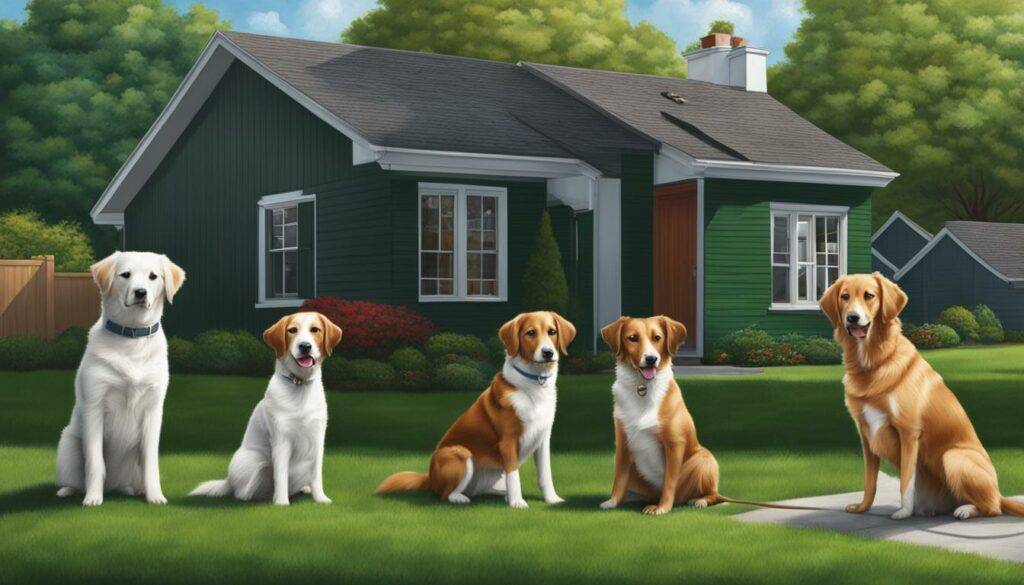
Tips for Managing a Puppy in a Large House
If you have a spacious home, keeping an eye on your puppy can be a challenge. Here are some helpful tips to ensure your puppy’s safety and successful potty training:
Create a designated puppy area:
Set up a specific area in your home where your puppy can stay when you cannot directly supervise them. This area can be a room, a pen, or a gated-off section. Make sure it is safe and free from any potential hazards. Provide your puppy with toys, a comfortable bed, and access to food and water.
Use baby gates:
Install baby gates to block off certain areas of your home that you want to keep off-limits to your puppy. This will help prevent accidents and ensure that your puppy stays in a supervised area where you can easily keep an eye on them.
Establish a consistent routine:
Stick to a regular schedule for potty breaks, feeding times, and playtime. Consistency is key when it comes to potty training, and establishing a routine will help your puppy understand when and where they should go to relieve themselves.
By implementing these tips and creating an environment that promotes safety and consistency, you can effectively manage your puppy in a large house and support their potty training progress.
Dealing with Accidents and Setbacks
During the potty training process, accidents and setbacks are bound to happen. It’s important to stay patient and proactive in managing these situations to continue making progress with your dog’s potty training. Here are some helpful tips for handling accidents and overcoming challenges:
- Be prepared with cleaning supplies: Accidents are unavoidable, so it’s essential to have the right cleaning supplies on hand to promptly clean up any messes. Use an enzymatic cleaner specifically designed for pet accidents to effectively eliminate odors and prevent your dog from returning to the same spot. Thoroughly clean the area to minimize the chance of repeat accidents.
- Take your dog outside immediately after accidents: If you catch your dog in the act of having an accident indoors, calmly interrupt them and immediately take them outside. This helps reinforce the idea that going outside is the appropriate place to relieve themselves. Remember to praise and reward your dog when they go potty in the designated outdoor area.
- Stay consistent and maintain a routine: Consistency is key in overcoming setbacks. Stick to a regular potty training routine, taking your dog outside at the same times each day, especially after meals, naps, and play sessions. By maintaining a consistent schedule, your dog will learn to associate specific times with potty breaks, reducing the likelihood of accidents.
- Revisit basic training principles: If your dog continues to have accidents or encounters setbacks, it may be beneficial to revisit some basic training principles. Ensure you are providing clear and consistent commands, offering rewards for positive behavior, and reinforcing good habits. Remember to remain patient and avoid punishment, as it can hinder the training process.
By following these strategies and remaining dedicated to your dog’s potty training, you can overcome accidents and setbacks. Remember that each dog is unique, and the timeframe for successful potty training may vary. Stay positive, celebrate progress, and continue providing your furry friend with the guidance and support they need.
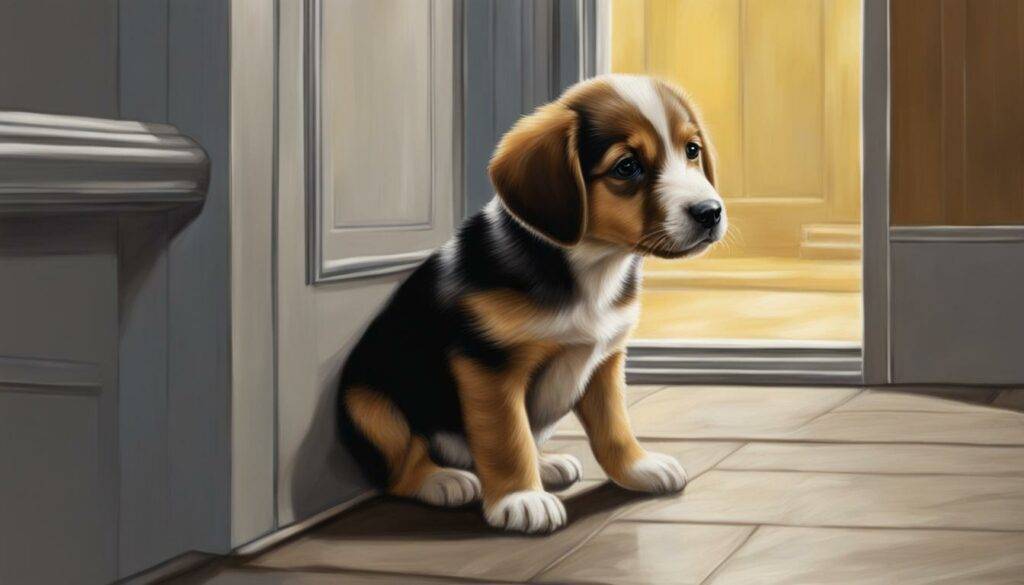
Table: Common Potty Training Challenges and Solutions
| Challenge | Solution |
|---|---|
| Accidents indoors | Clean accidents thoroughly and take the dog outside immediately after. |
| Marking territory | Neuter or spay your dog, provide plenty of exercise, and establish clear boundaries. |
| Anxiety or stress-related accidents | Address the underlying cause of anxiety and provide a calm and secure environment. |
| Resistance to going outside | Gradually introduce outdoor environments and make potty breaks a positive experience. |
Tips for Indoor Dogs or Time Alone
When it comes to indoor dogs or leaving your puppy alone for extended periods, potty training can present some unique challenges. However, with the right approach, you can successfully train your dog to use indoor potty pads. This section will provide you with valuable tips and strategies to make indoor dog potty training a breeze.
1. Gradual Transition: Start by placing the potty pads in a designated area indoors. Encourage your dog to use the pads by using verbal cues and rewards. As your dog becomes more comfortable using the pads, gradually move them closer to the door. The ultimate goal is to transition your dog from indoor to outdoor potty training, so eventually, the pads can be placed outside.
2. Consistency: Consistency is key when training your dog to use indoor potty pads. Establish a regular schedule for potty breaks and stick to it. Take your dog to the designated area at consistent intervals, such as after meals and naps. Praise and reward your dog whenever they successfully use the potty pads to reinforce the desired behavior.
3. Limit Freedom: When leaving your dog alone, it’s important to limit their freedom to avoid accidents. Create a confined space for your dog, such as a gated area or a playpen. Ensure that the area includes access to the designated potty area with the indoor potty pads. By limiting your dog’s freedom, you can prevent accidents and reinforce the importance of using the designated potty area.
| Indoor Dog Potty Training Tips | Training Dogs to Use Indoor Potty Pads |
|---|---|
| 1. Gradually transition from indoor to outdoor potty training by moving potty pads closer to the door. | 1. Use verbal cues and rewards to encourage dogs to use the indoor potty pads. |
| 2. Stick to a consistent potty training schedule to establish good habits. | 2. Establish a regular schedule for potty breaks and take dogs to the potty pads at consistent intervals. |
| 3. Limit your dog’s freedom by creating a confined space with access to the designated potty area. | 3. Confine dogs to a specific area with the indoor potty pads to reinforce the importance of using them. |
Crate Training and its Benefits
When it comes to potty training your dog, crate training can be a valuable tool in your arsenal. Crate training involves using a crate or kennel as a safe and secure space for your dog. Not only does crate training help with potty training, but it also promotes good behavior and provides your dog with a comfortable and familiar space of their own.
One of the key benefits of crate training is that it helps establish a routine for your dog. Dogs naturally avoid soiling their sleeping area, so by keeping your dog in a crate when you cannot supervise them, you’re teaching them to hold their bladder and bowels until it’s time to go outside.
Crate training also helps to prevent accidents in the house. When your dog is confined to a crate, they are less likely to have accidents or chew on furniture or other household items. It also gives you peace of mind knowing that your dog is safe and secure when you’re not able to watch them.
| Benefits of Crate Training | Explanation |
|---|---|
| Establishes a routine | Helps your dog learn to hold their bladder and bowels until it’s time to go outside |
| Prevents accidents | Keeps your dog from having accidents or chewing on furniture |
| Provides a safe space | Gives your dog a comfortable and familiar space of their own |
When crate training your dog, it’s important to introduce the crate gradually and make it a positive experience. Use treats, toys, and praise to help your dog associate the crate with positive feelings. Make sure the crate is the appropriate size for your dog, allowing them enough room to stand up, turn around, and lie down comfortably.
Remember, the crate should never be used as a form of punishment. It should be a place of refuge and relaxation for your dog. Be sure to give them plenty of opportunities for exercise and play outside the crate as well. With patience and consistency, crate training can be an effective tool in potty training your dog and providing them with a safe and comfortable space.
Puppy Potty Training FAQs
During the process of potty training your puppy, you may come across various questions and concerns. To help address these, we have compiled a list of frequently asked questions about puppy potty training. Take a look at the answers below to find solutions to common challenges:
How do I deal with accidents?
Accidents are a normal part of the potty training process. When accidents happen, it’s important to remain calm and avoid scolding or punishment, as this can create anxiety and hinder progress. Instead, clean up the accident using an enzymatic cleaner to remove any odors that may attract your puppy to the same spot again. Focus on reinforcing positive behavior by rewarding your puppy when they eliminate in the appropriate spot.
How do I transition from indoor to outdoor potty training?
If you’ve been using indoor potty pads or a designated area for your puppy, transitioning to outdoor potty training requires patience and consistency. Start by gradually moving the potty pads closer to the door leading outside. Once your puppy is comfortable with this change, move the pads just outside the door. Eventually, remove the pads completely and encourage your puppy to eliminate in the designated outdoor area. Be sure to offer praise and rewards when your puppy successfully goes outside.
Remember, consistency is key during the transition phase. Stick to a regular schedule, take your puppy outside frequently, and use positive reinforcement to reinforce good habits.
How can I establish a consistent routine?
Establishing a consistent routine is vital for successful potty training. Start by creating a schedule that includes regular potty breaks throughout the day, including first thing in the morning, after meals, after naps, and before bedtime. Take your puppy to the same designated spot each time and use specific cues or commands, such as “go potty.” Be patient and offer praise or rewards when your puppy eliminates in the right place. Consistency and positive reinforcement will help your puppy understand and follow the routine more effectively.
By addressing these common questions and concerns, you’ll be better equipped to navigate the challenges of puppy potty training. Remember, each puppy is unique, so it’s important to adapt your approach based on their individual needs and progress.
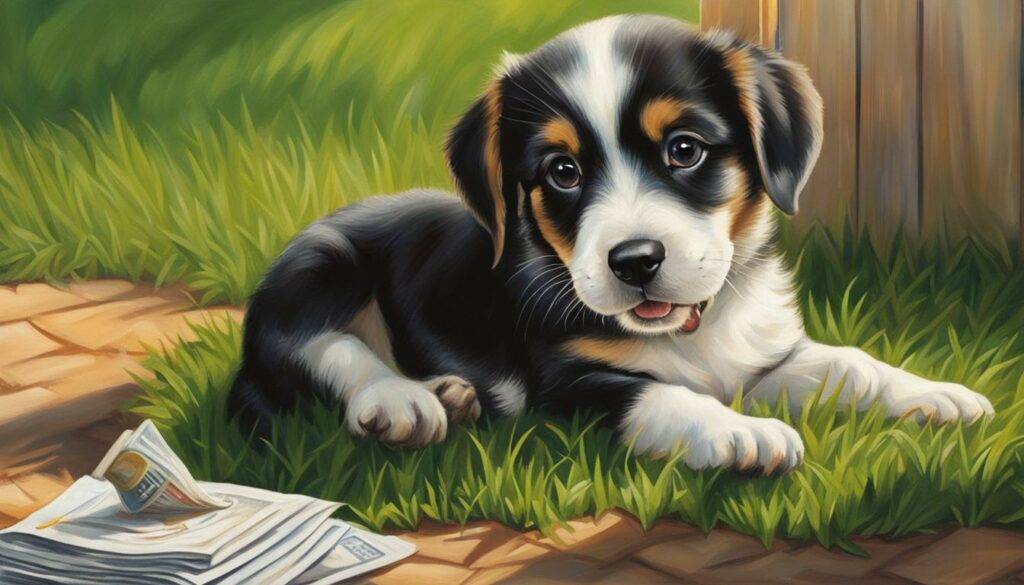
Conclusion
In conclusion, successfully potty training a dog in just 7 days requires consistency, patience, and a well-established routine. By following the tips and techniques outlined in this article, we can confidently say that you can achieve your potty training goals and enjoy a clean and happy home with your furry friend.
Remember that accidents are normal during the training process, and setbacks can happen. But don’t get discouraged! Focus on what’s working and build on your successes. Stay consistent in your training approach, use positive reinforcement, and maintain a watchful eye on your puppy.
With time and dedication, you’ll see progress and witness a stronger bond between you and your dog. So, wrap up your potty training journey with determination and a celebration of your wins. We believe in you and your four-legged companion – together, you can conquer potty training and create a loving and harmonious home environment.
FAQ
What should I do if my puppy has an accident indoors?
Accidents are normal during potty training. Clean the area thoroughly to remove odors that can attract your puppy back to the same spot. Stay calm and take your puppy outside immediately after any signs of needing to go.
How can I transition my puppy from indoor to outdoor potty training?
Gradually move indoor potty pads closer to the door and eventually outside. Use positive reinforcement to encourage your puppy to use the designated outdoor area for potty breaks.
Is crate training effective for potty training?
Yes, crate training can be an effective tool. Introduce the crate gradually using positive reinforcement. Use the crate when you cannot supervise your puppy or during sleep time, as dogs naturally avoid soiling their sleeping area.
How can I establish a consistent routine for potty training?
Set regular potty breaks first thing in the morning, after naps, playtime, and meals. Take your puppy outside every hour if none of these triggers occur. Use the same area, cues, and positive reinforcement consistently during the training process.
What should I do if I have a large home and can’t keep an eye on my puppy at all times?
Consider restricting your puppy’s access to a smaller area or using a crate for short periods when necessary. When taking your puppy outside, always use a leash and go to the same area. Avoid playing or talking to your puppy until they have finished their business.
How do I handle setbacks during potty training?
Stay positive and focus on what’s working. Clean accidents thoroughly and continue to reinforce potty training. Consistency and positive reinforcement will help your puppy overcome setbacks.
Can I potty train an indoor dog or a puppy left alone for extended periods?
Yes, you can use indoor potty pads or designated areas for your puppy to relieve themselves. Gradually transition from indoor to outdoor potty training by moving the pads closer to the door and eventually outside. Provide your puppy with access to their potty area when you need to leave them alone and limit their freedom to prevent accidents.
How do I use crate training for potty training?
Introduce the crate gradually and use positive reinforcement to make it a positive experience for your puppy. Use the crate when you cannot supervise them or during sleep time. Remember to never use the crate for punishment and give your puppy ample opportunities for exercise and play outside the crate.
What are some common questions about puppy potty training?
Common questions include how to deal with accidents, transitioning from indoor to outdoor training, crate training, and establishing a consistent routine. Refer to the FAQ section for more tips and answers to these questions.
Source Links
- https://www.everand.com/book/491221830/Puppy-Training-Guide-for-Beginners-How-to-Train-Your-Dog-or-Puppy-for-Kids-and-Adults-Following-a-Step-by-Step-Guide-Includes-Potty-Training-101-D
- https://kaufmannspuppytraining.com/en/how-to-potty-train-a-puppy-fast/
- https://es.everand.com/audiobook/476221819/Puppy-Training-Guide-for-Beginners
Dog Care and Maintenance
Socializing a rescue puppy around horses #shelterdog #dog #training #stray #puppy #socialization

.video-container {position: relative;padding-bottom: 56.25%;padding-top: 1px; height: 0; overflow: hidden;} .video-container iframe, .video-container object, .video-container embed {position: absolute;top: 0;LEFT: 0;width: 100%;height: 100%;}
By: The Orphan Pet
Title: Socializing a rescue puppy around horses #shelterdog #dog #training #stray #puppy #socialization
Sourced From: www.youtube.com/watch?v=p-UsJ5atPik
Dog Care and Maintenance
STOP Puppy Biting With A DIFFERENT Approach!!

.video-container {position: relative;padding-bottom: 56.25%;padding-top: 1px; height: 0; overflow: hidden;} .video-container iframe, .video-container object, .video-container embed {position: absolute;top: 0;LEFT: 0;width: 100%;height: 100%;}
By: McCann Dog Training
Title: STOP Puppy Biting With A DIFFERENT Approach!!
Sourced From: www.youtube.com/watch?v=0R-ndQN3zEk
Dog Care and Maintenance
Puppy Socialization is the Most Important Part of Dog Training!
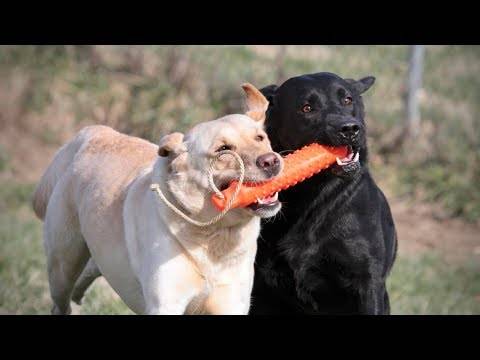
.video-container {position: relative;padding-bottom: 56.25%;padding-top: 1px; height: 0; overflow: hidden;} .video-container iframe, .video-container object, .video-container embed {position: absolute;top: 0;LEFT: 0;width: 100%;height: 100%;}
By: Stonnie Dennis
Title: Puppy Socialization is the Most Important Part of Dog Training!
Sourced From: www.youtube.com/watch?v=Et8NW4WLNyM
-

 cats7 months ago
cats7 months agoHow to Get Your Cats to Stop… Everything You Hate: Every No Needs a Yes!
-

 All Animals1 year ago
All Animals1 year agoALL about Lagomorphs Explained!
-

 All Animals10 months ago
All Animals10 months agoExplore the Wilderness: ALL about Carnivores Unleashed!
-

 Animals1 year ago
Animals1 year agoThe Wonders: ALL About Artiodactyls
-

 Cat Breeds6 months ago
Cat Breeds6 months agoWhat Are Some Rare Domestic Cat Breeds?
-

 Cat Breeds6 months ago
Cat Breeds6 months agoWhat Are the Top Family-Friendly Domestic Cat Breeds?
-

 Cat Breeds6 months ago
Cat Breeds6 months agoDiscover Rare Domestic Cat Breeds With Our Guide
-

 Cat Breeds6 months ago
Cat Breeds6 months agoTop Family-Friendly Domestic Cat Breeds



